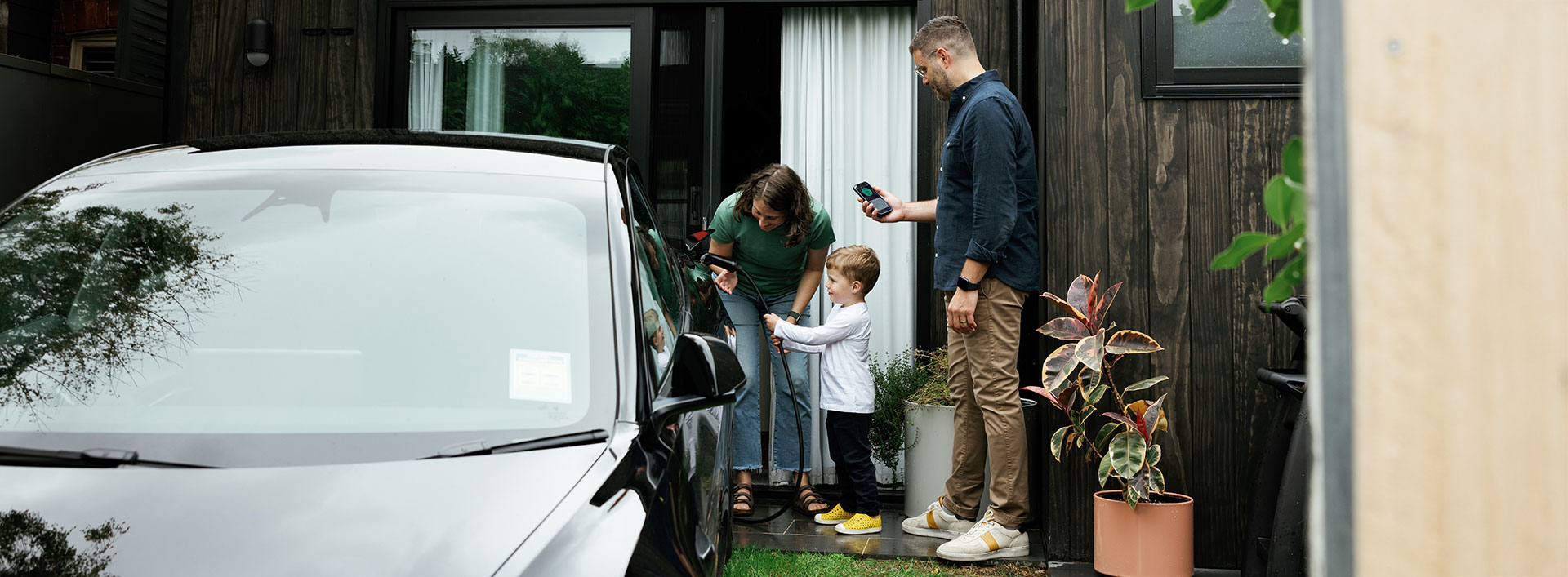
At a glance
Vehicle-to-Grid, or V2G, technology allows an electric vehicle to do more than simply draw electricity from the grid. Using a bi-directional charger, it can send power back, either to the grid, or to a home during peak demand or outages.
Think of it as the next step beyond home batteries and solar panels: your car becomes part of the energy ecosystem. The average EV battery stores four to six times more energy than a standard household battery — that’s enough to power an average home for two to four days.
Read more: What is V2L, V2H and V2G
Australia’s electricity network is under pressure to balance growing renewable generation with the times people actually use power. Solar energy peaks at midday, but household demand spikes in the evening. That mismatch creates challenges for grid operators, and opportunities for EV owners.
By charging when energy is plentiful and discharging when demand is high, V2G helps flatten the load curve (a visualisation of how much power is available on the grid at any time.) This supports renewable energy integration, can help reduce load on local networks, adds resilience during blackouts, and give drivers potential savings or income.
Amber Electric, which sells electricity to subscription customers at wholesale prices, for instance, allows participants to automatically charge their vehicles when electricity is cheapest (sometimes even being paid to soak up energy) and export energy when prices rise. Early adopters have reportedly saved or earned between $2000 and $3000 a year through bill savings and grid sales.
While the concept sounds simple, the real-world picture is complex. V2G relies on compatible software and hardware in vehicles, approved chargers, and supportive energy standards. Also, how V2G affects car batteries needs to be better understood. Early studies have shown mixed results - some showed a slight decline, others actually showed an improvement in battery health due to SoC (State of Charge) being better managed within the 20-80% range.
The technology also depends on people’s habits: how often they drive, when they plug in, and whether they have rooftop solar or other home energy systems. A car used daily for commuting will use V2G technology very differently to one that spends most of the week parked at home.
That’s why V2G trials are critical. For V2G to make sense for EV owners and energy companies, first we need to understand the ins and outs of how it works. Trials allow researchers to see how driving behaviour, household energy profiles, and local network conditions shape outcomes, and to understand where barriers still exist.
That’s why NRMA is partnering with Amber Electric and the UTS Institute for Sustainable Futures in a new trial, using funding under the ARENA Driving the Nation Program and iMOVE Cooperative Research Centre. The partnership will recruit 50 BYD Atto 3 owners across Australia to take part in the nation’s first large-scale residential V2G rollout. Participants will receive a free bi-directional charger (excluding installation costs), warranty exemption for V2G use, and access to Amber’s specialised energy-management platform.
NRMA is inviting applications from BYD Atto 3 owners – and owners of other EVs for potential future iterations of the trial – who would like to participate. Participants will be able to override when their EVs are charging, ensuring normal vehicle use is not restricted. That said, drivers who plug in at the most favourable times will see the highest financial returns.
For example, if you usually pop out to the shops at lunchtime, when solar generation is high and energy prices can run into the negative, you might consider doing that grocery run on the shoulder instead. Making sure the car is plugged in during the evening can also be beneficial, because that is generally when energy prices are high, making discharging electrons to the grid more lucrative.
Installations are due to begin in October, with all 50 sites commissioned by December. Over 12 months, UTS researchers will analyse charging data, household characteristics, and financial outcomes to understand what works best - and where improvement is needed. The trial will also help understand any remaining technical barriers that need to be addressed so that anyone who wants to access V2G can do so.
The study builds on earlier NRMA-UTS collaboration funded by iMOVE Cooperative Research Centre, which found strong interest among Australian drivers: 47 per cent of NRMA members and 73 per cent of EV drivers said they like the idea of V2G.
Recent progress has helped pave the way, with updated national standards (AS/NZS 4777.2) now allowing approved bi-directional chargers in homes, and at least three such units on the market today.
V2G could represent a significant opportunity for households and the broader economy. Previous studies, including ARENA’s National Bidirectional Charging Roadmap, estimate the total potential benefit to society at between $800 million and $3 billion, driven by market and network savings.
For now, the NRMA, Amber Electric and UTS Institute for Sustainable Futures trial will focus on what’s possible today: helping ordinary EV owners turn their cars into energy assets, without sacrificing convenience or control.
To learn more or register interest in the demonstration, visit Amber Electric’s V2G program page.